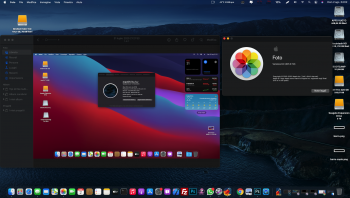I have downloaded the Beta 3 installer, created the USB, patched with BarryKn's micropatcher 0.0.17 and added to the root the Hax3.sh
I followed your instructions and booted from the usb, typed the code for sh Hax3.sh and after I started the install from utilities. Selected the drive and it gave me an error which went away by itself and I have continued with agree and it started to install. Showed 14 min and when it turned to 12, the error appeared again and it told me to retry... That is why I thought that I have to patch it with that 16bg... Which I did execute! So a terminal opened and it started deleting and copying files like crazy! My question to you is: should I re-download the Beta 3 installer and redo the process just using the last 2 codes that you have told me, or I sould just try with what I have? Thank you sir and again sorry...
If you use the micropatcher you don't need "Hax3.sh" just follow that method , anyway next week they should release beta 4 , maybe don't install yet the beta 3, for Ivy Bridge Mac you don't need a patched BaseSystem 16 gb prelinkedkernel fix.


